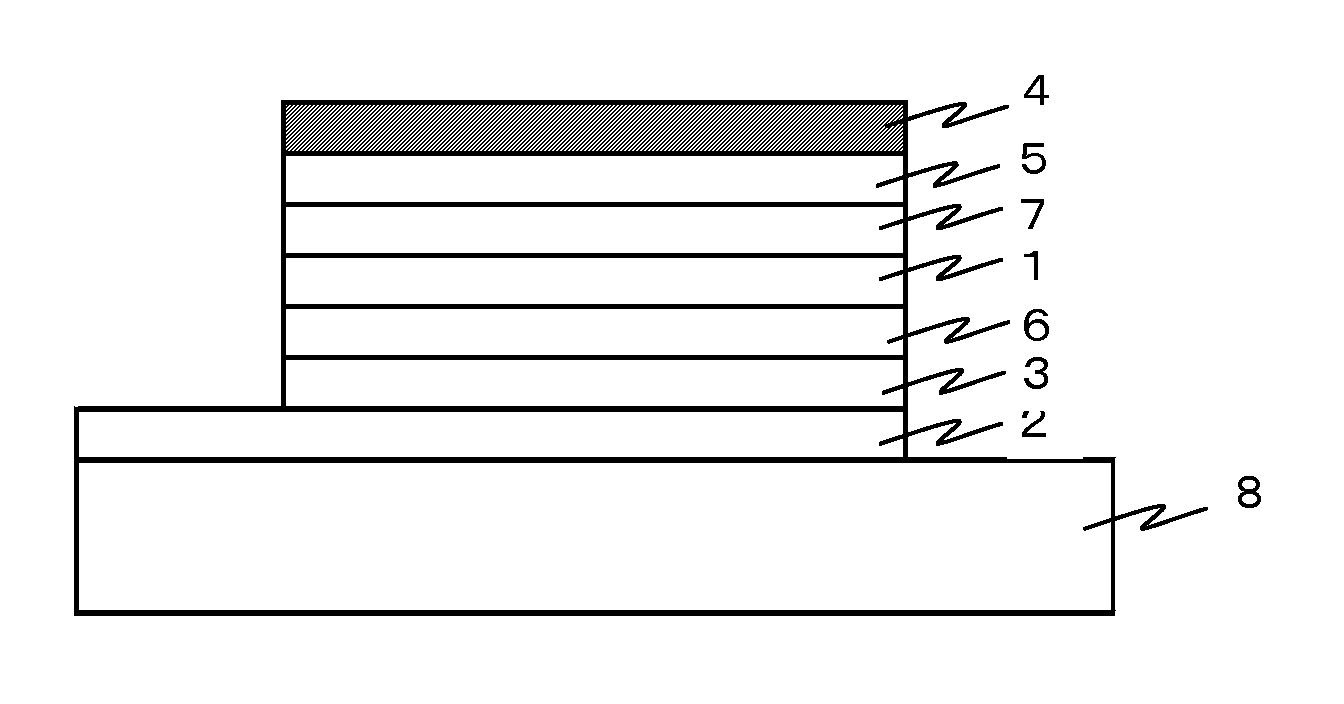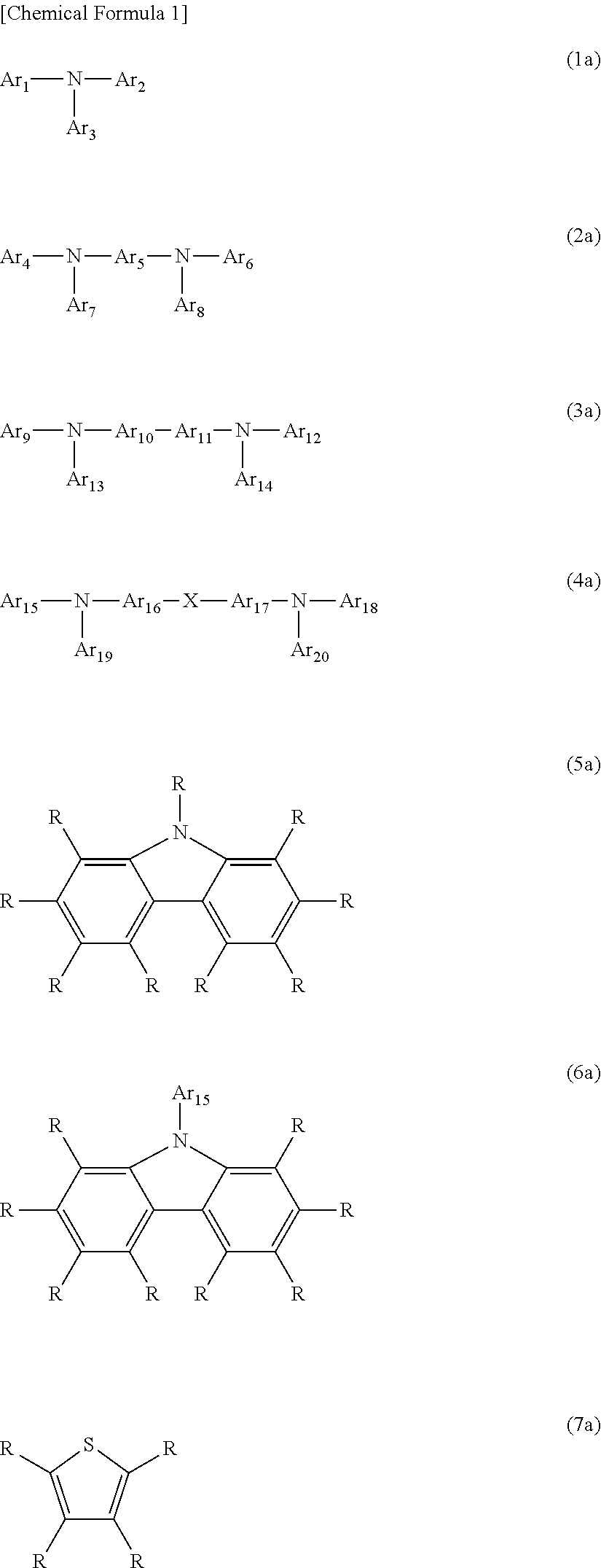Material for organic electronics, organic electronic element, organic electroluminescent element, display element using organic electroluminescent element, illuminating device, and display device
a technology of electronic elements and organic electroluminescent elements, applied in the direction of electroluminescent light sources, chemistry apparatuses and processes, and compositions of light sources, can solve the problems of short service life of elements, low light emission efficiency, and difficult multilayering, and achieve stable driving for a long time, low temperature curing, and low voltage
- Summary
- Abstract
- Description
- Claims
- Application Information
AI Technical Summary
Benefits of technology
Problems solved by technology
Method used
Image
Examples
first embodiment
[Organic EL Element of First Embodiment]
[0113]The organic EL element of the first embodiment of the present invention is characterized by having a layer formed from the material for organic electronics of the present invention as described above (hereinafter, also referred to as a polymerized layer). The organic EL element of the present invention is not particularly limited as long as it includes a light emitting layer, a polymerized layer, an anode, a cathode, and a substrate, and the organic EL element may also have other layers such as a hole injection layer, an electron injection layer, a hole transport layer, and an electron transport layer. The various layers will be explained in detail below.
[Light Emitting Layer]
[0114]The material used in the light emitting layer may be a low molecular weight compound, or may be a polymer or an oligomer, and a dendrimer or the like can also be used. Examples of a low molecular weight compound using fluorescent light emission include perylen...
second embodiment
[Organic EL Element of Second Embodiment]
[0139]The organic EL element of the second embodiment of the present invention has a multilayer structure, and is characterized in that two adjacent layers in the multilayer structure are formed by a coating method, respectively using a mixture containing a hole transporting compound having a polymerizable substituent, and the hole transporting compounds are respectively polymerized. Hereinafter, similarly to the first embodiment, a layer which is formed by a coating method using a mixture containing a hole transporting compound having a polymerizable substituent, and has the solubility modified by polymerizing the hole transporting compound, will be referred to as a polymerized layer.
[0140]The organic electroluminescent element of the second embodiment of the present invention has a multilayer structure, but the various layers in the multilayer structure are not particularly limited as long as the multilayer structure has a light emitting la...
example 1
Evaluation of Polymerizability
[0193]A coating solution prepared by mixing a toluene solution (400 μl) of a compound 1 (4.5 mg) shown below and an ethyl acetate solution (100 μl) of an ionic compound 1 (0.45 g) shown below, was spin coated on a quartz plate at 3000 rpm. Subsequently, the coated quartz plate was heated on a hot plate at 120° C. for 10 minutes to carry out a polymerization reaction. After the heating, the quartz plate was immersed for one minute in a solvent mixture of toluene:ethyl acetate (4:1), and was washed. The residual film ratio was measured from the ratio of the absorbances (Abs) of the maximum absorption (λmax) in the UV-vis spectrum obtained before and after washing.
[0194]Before washing: λmax=383 nm, Abs=0.229
[0195]After washing: λmax=383 nm, Abs=0.228
Residual film ratio (%)=Abs after washing / Abs before washing×100=0.228 / 0.229×100=99.6
[0196]
PUM
| Property | Measurement | Unit |
|---|---|---|
| temperature | aaaaa | aaaaa |
| temperature | aaaaa | aaaaa |
| temperature | aaaaa | aaaaa |
Abstract
Description
Claims
Application Information
 Login to View More
Login to View More - R&D
- Intellectual Property
- Life Sciences
- Materials
- Tech Scout
- Unparalleled Data Quality
- Higher Quality Content
- 60% Fewer Hallucinations
Browse by: Latest US Patents, China's latest patents, Technical Efficacy Thesaurus, Application Domain, Technology Topic, Popular Technical Reports.
© 2025 PatSnap. All rights reserved.Legal|Privacy policy|Modern Slavery Act Transparency Statement|Sitemap|About US| Contact US: help@patsnap.com



